The Development of 170 GHz, 1 MW Gyrotron for Fusion Application
Abstract
:1. Introduction
2. Mode Selection
3. Design of 170 GHz Gyrotron
3.1. Cavity
3.2. Magnetron Injection Gun (MIG)
3.3. Quasi-Optical Mode Converter
3.4. Output Window
4. Exploration Testing
5. Conclusions
Author Contributions
Funding
Data Availability Statement
Conflicts of Interest
References
- Gantenbein, G.; Erckmann, V.; Illy, S.; Kern, S.; Kasparek, W.; Lechte, C.; Leonhardt, W.; Liévin, C.; Samartsev, A.; Schmid, M.; et al. 140 GHz, 1 MW CW Gyrotron Development for Fusion Applications-Progress and Recent Results. Infrared Milli Terahertz Waves 2011, 32, 320–328. [Google Scholar] [CrossRef]
- Henderson, M.A.; Saibene, G. Critical interface issues associated with the ITER EC system. Nucl. Fusion 2008, 48, 054017. [Google Scholar] [CrossRef]
- Thumm, M. Progress on gyrotrons for ITER and Future Thermonuclear Fusion Reactors. IEEE Trans. Plasma Sci. 2011, 39, 971–979. [Google Scholar] [CrossRef]
- Thumm, M. State-of-the-art of high power gyro-devices and free electron masers, update 2009. IEEE Trans. Plasma Sci. 2011, 39, 4. [Google Scholar]
- Sakamoto, K.; Kasugai, A.; Kajiwara, K.; Takahashi, K.; Oda, Y.; Hayashi, K.; Kobayashi, N. Progress of high power 170 GHz gyrotron in JAEA. Nucl. Fusion 2009, 49, 095019. [Google Scholar] [CrossRef]
- Denisov, G.G.; Kuftin, A.N.; Malygin, V.I.; Venediktov, N.P.; Vinogradov, D.V.; Zapevalov, V.E. 110 GHz gyrotron with a built-in high-efficiency converter. Int. J. Electron. 1992, 72, 1079–1091. [Google Scholar] [CrossRef]
- Blank, M.; Kreischer, K.; Temkin, R.J. Theoretical and Experimental Investigation of a Quasi-Optical Mode Converter for a 110-GHz Gyrotron. IEEE Trans. Plasma Sci. 1996, 24, 3. [Google Scholar] [CrossRef]
- Braune, H.; Erckmann, V.; Illy, S.; Laqua, H.P.; Michel, G.; Noke, F.; Purps, F. Transverse Field collector sweeping for the W7-X gyrotrons-modulation techniques. In Proceedings of the 34th International Conference on Infrared, Millimeter, and Terahertz Waves, Busan, Korea, 21–25 September 2009; pp. 146–147. [Google Scholar]
- Illy, S.; Beringer, M.H.; Kern, S.; Thumm, M. Collector design studies for a 1 MW cylindrical-cavity and a 4 MW coaxial-cavity gyrotron. In Proceedings of the 35th International Conference on Infrared, Millimeter, and Terahertz Waves, Rome, Italy, 5–10 September 2010. [Google Scholar]
- Dammertaz, G.; Alberti, S.; Arnold, A. 1 MW, 140 GHz, CW Gyrotron for Wendelstein 7-X. In Proceedings of the 25th International Conference on Infrared and Millimeter Waves, 00EX442, Beijing, China, 12–15 September 2000. [Google Scholar]
- Pozar, D.M. Microwave Engineering, 3rd ed.; John Wiley & Sons (Asia) Pte Ltd.: Beijing, China, 2006; pp. 242–244. [Google Scholar]
- Kalaria, P.C.; Kartikeyan, M.V.; Thumm, M. Design of 170 GHz, 1.5-MW Conventional Cavity Gyrotron for Plasma Heating. IEEE Trans. Plasma Sci. 2014, 42, 1522–1528. [Google Scholar] [CrossRef]
- Borie, E.; Jodicke, B. Comments on the linear theory of the gyrotron. IEEE Tran. Plasma Sci. 1998, 16, 116–121. [Google Scholar] [CrossRef]
- Whaley, D.R.; Tran, M.Q.; Tran, T.M.; Antonsen, T.M. Mode competition and start-up in cylindrical cavity gyrotrons using high-order operating modes. IEEE Trans. Plasma Sci. 1994, 22, 850–860. [Google Scholar] [CrossRef]
- Dumbrajs, O.; Idegara, T.; Saito, T.; Tatematsu, Y. Calculations of starting currents and frequencies in frequency-tunable gyrotrons. Jpn. J. Appl. Phys. 2012, 51, 126601. [Google Scholar] [CrossRef]
- Xia, D.; Jin, M.; Bai, M. Poynting Vector Method for Reflector Beam Shaping. IEEE Antennas Wirel. Propag. Lett. 2019, 18, 664–668. [Google Scholar] [CrossRef]
- Jin, M.; Li, X.; Xia, D. A Compact Dual-Mirror Design of Quasi-Optical Mode Converter for Gyrotron Application. IEEE Antennas Wirel. Propag. Lett. 2022. Early Access. [Google Scholar] [CrossRef]
- Jin, J. Quasi-Optical Mode Converter for a Coaxial Cavity Gyrotron. Ph.D. Thesis, Karlsruher Institute of Technology, Karlsruhe, Germany, 2007. [Google Scholar]


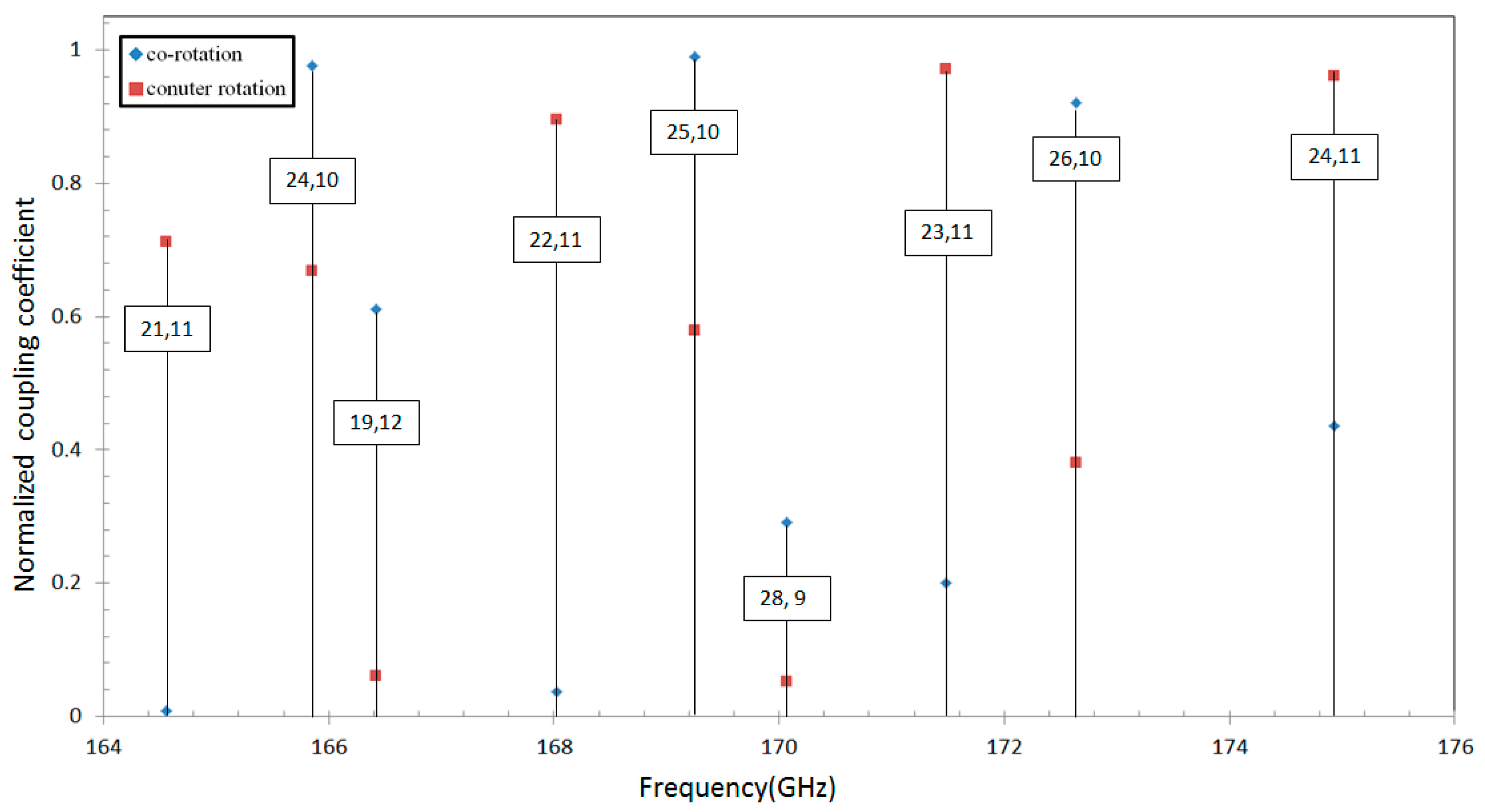
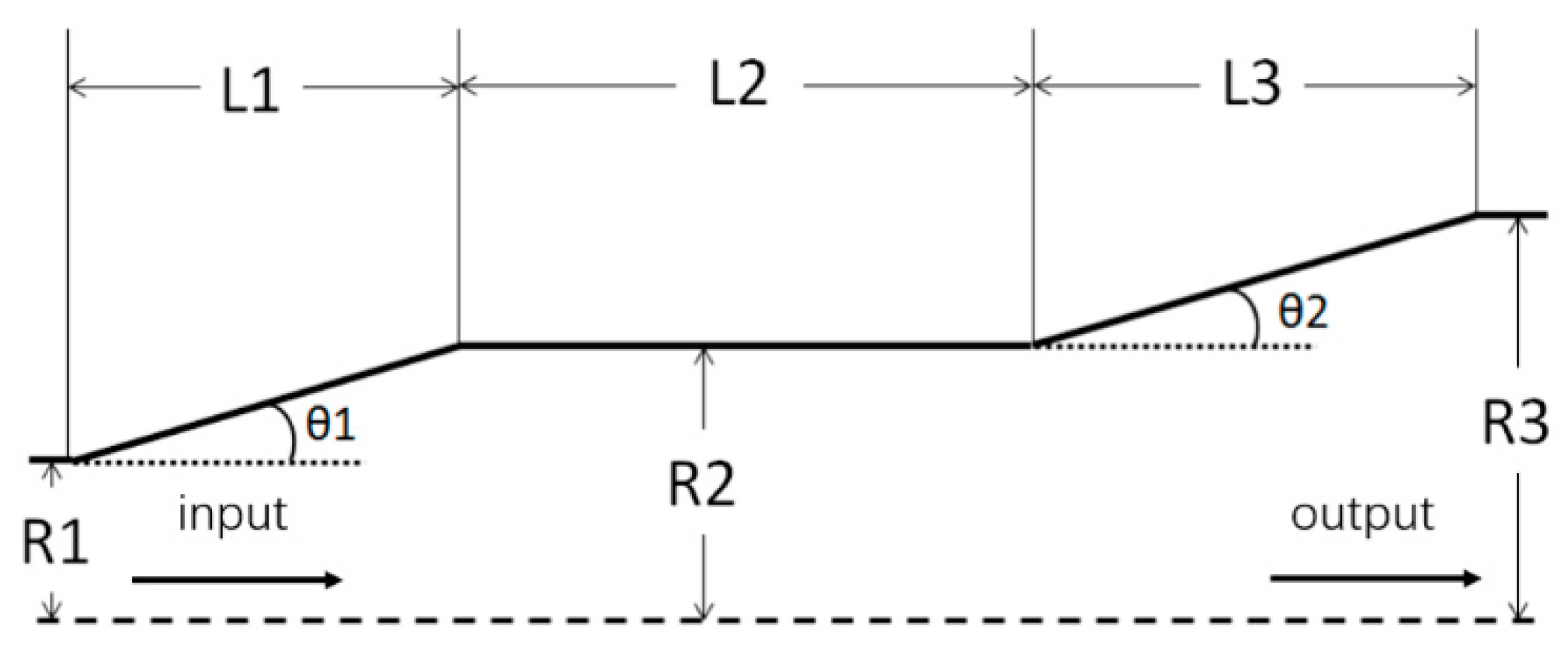

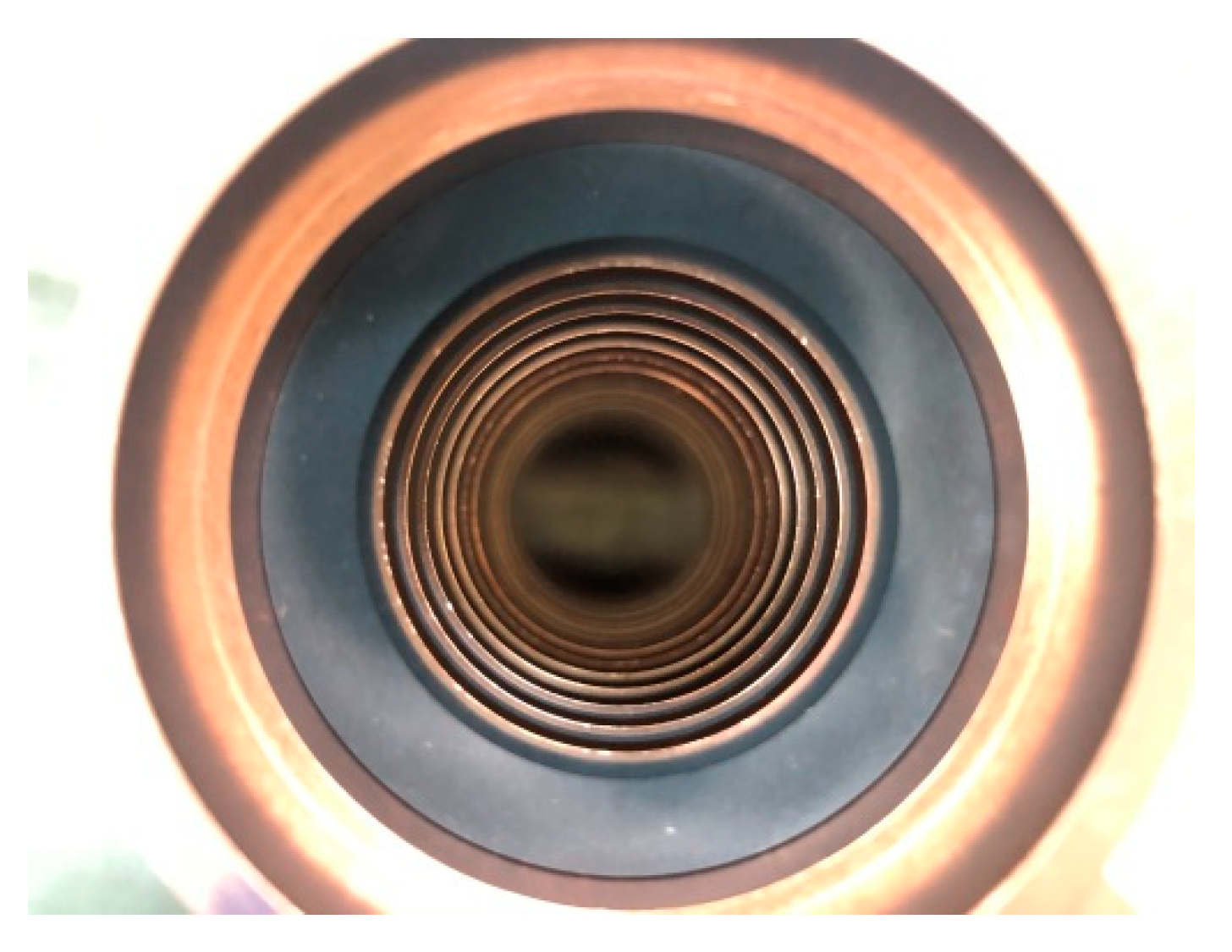
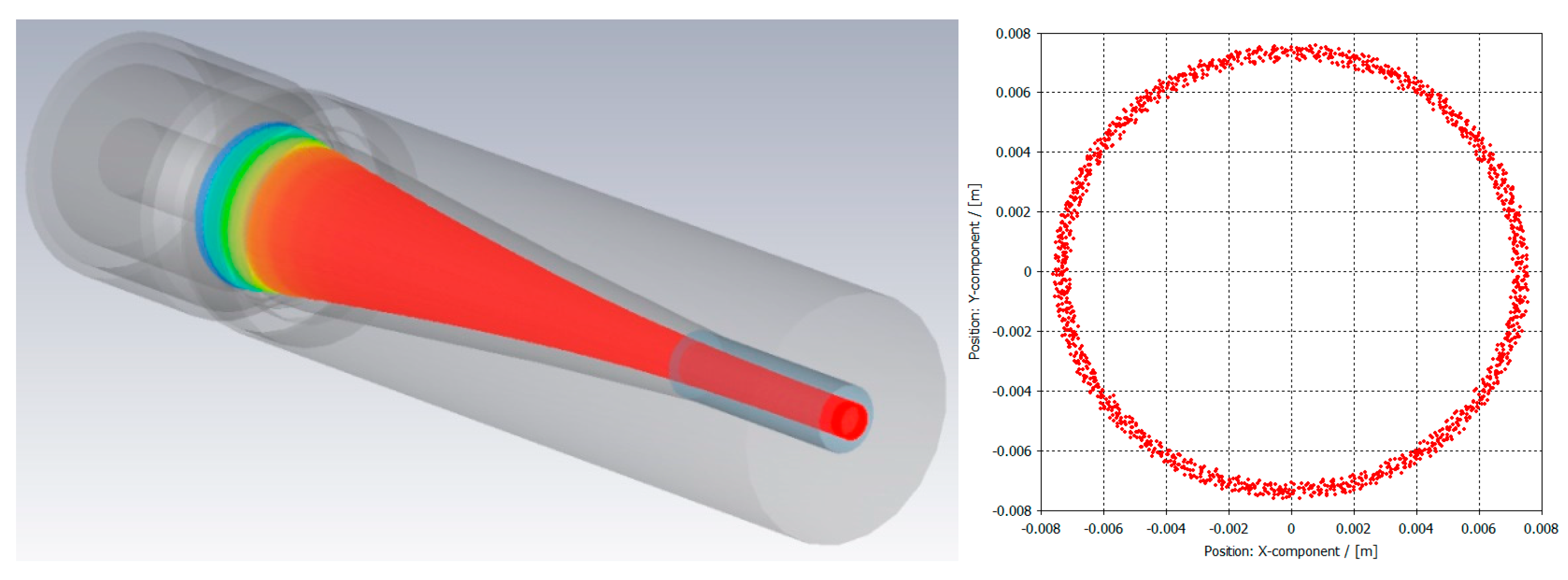
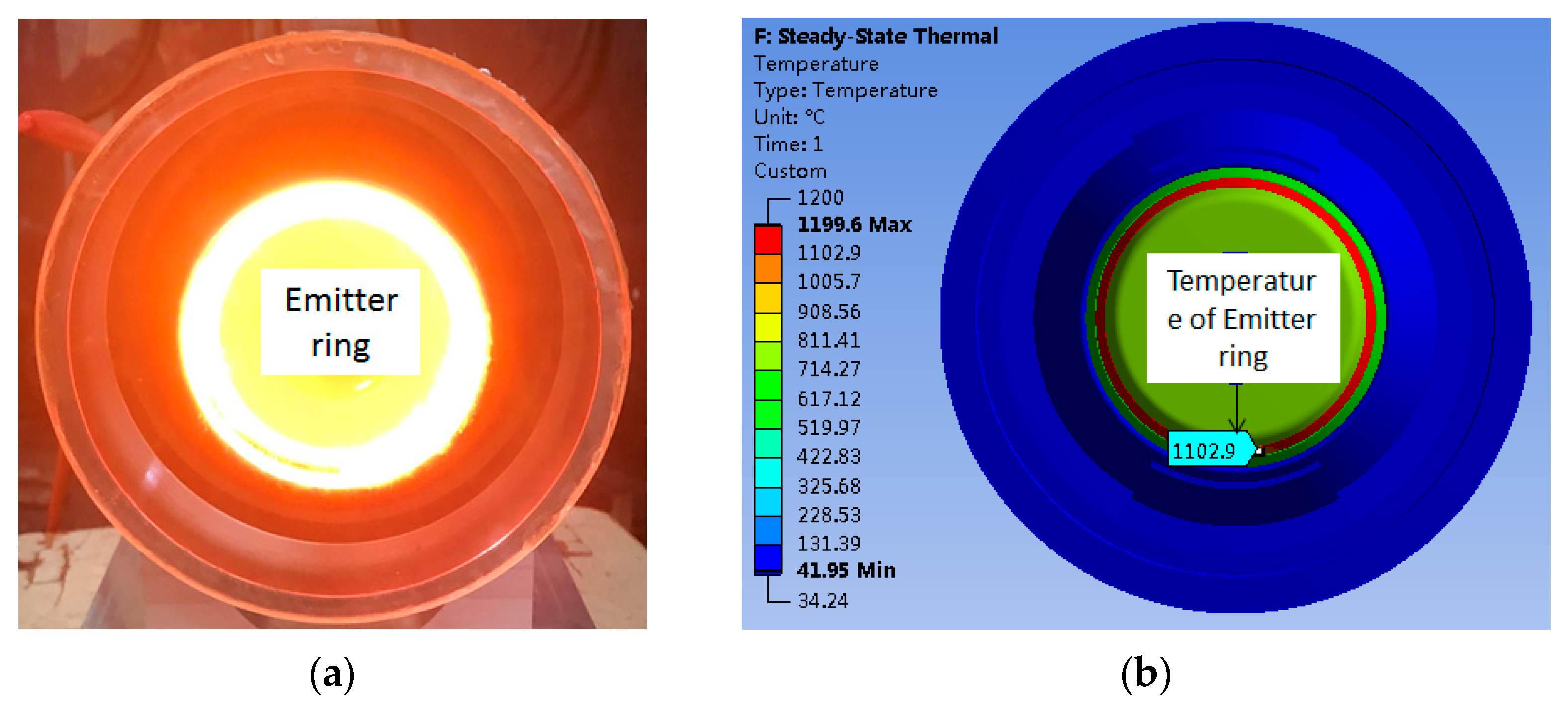



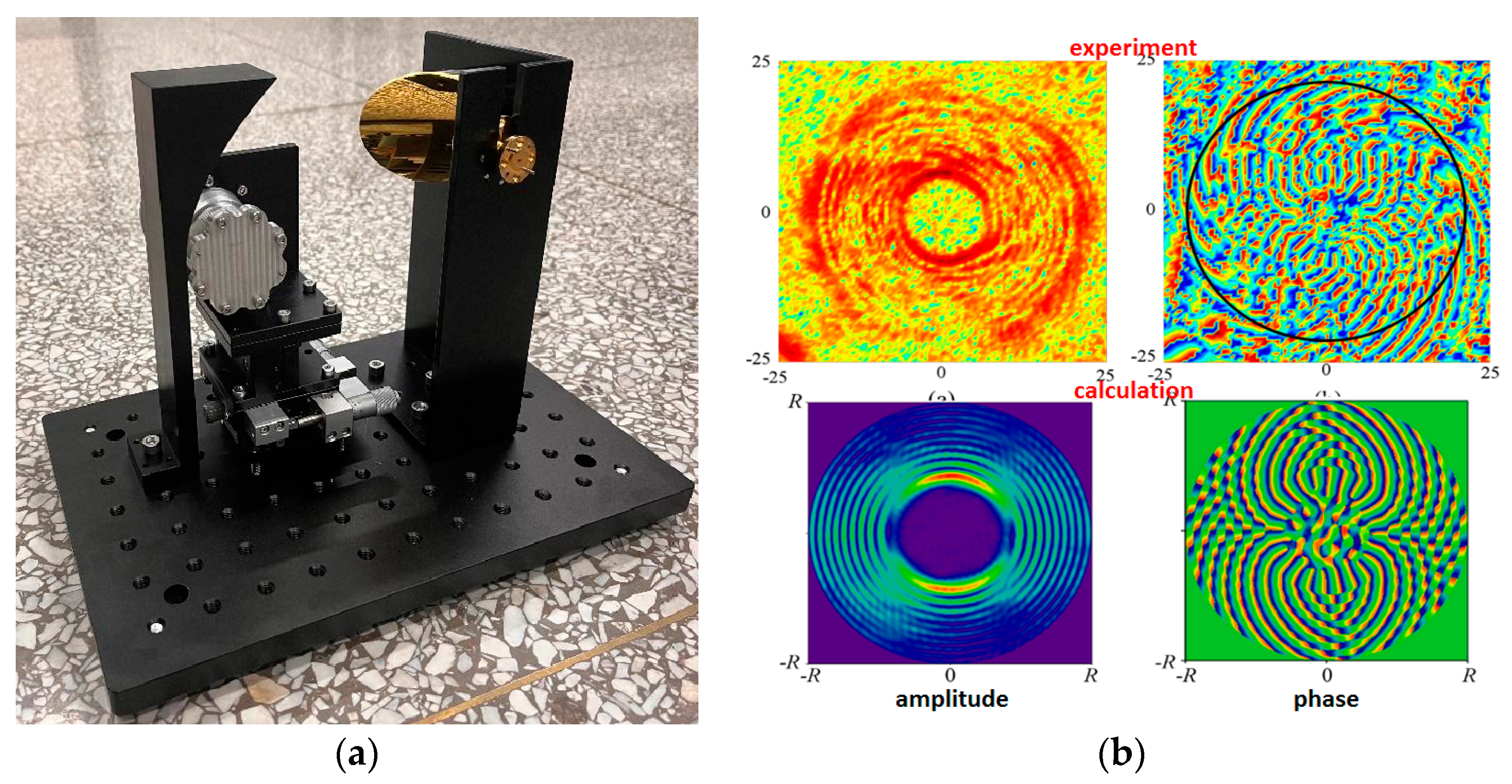
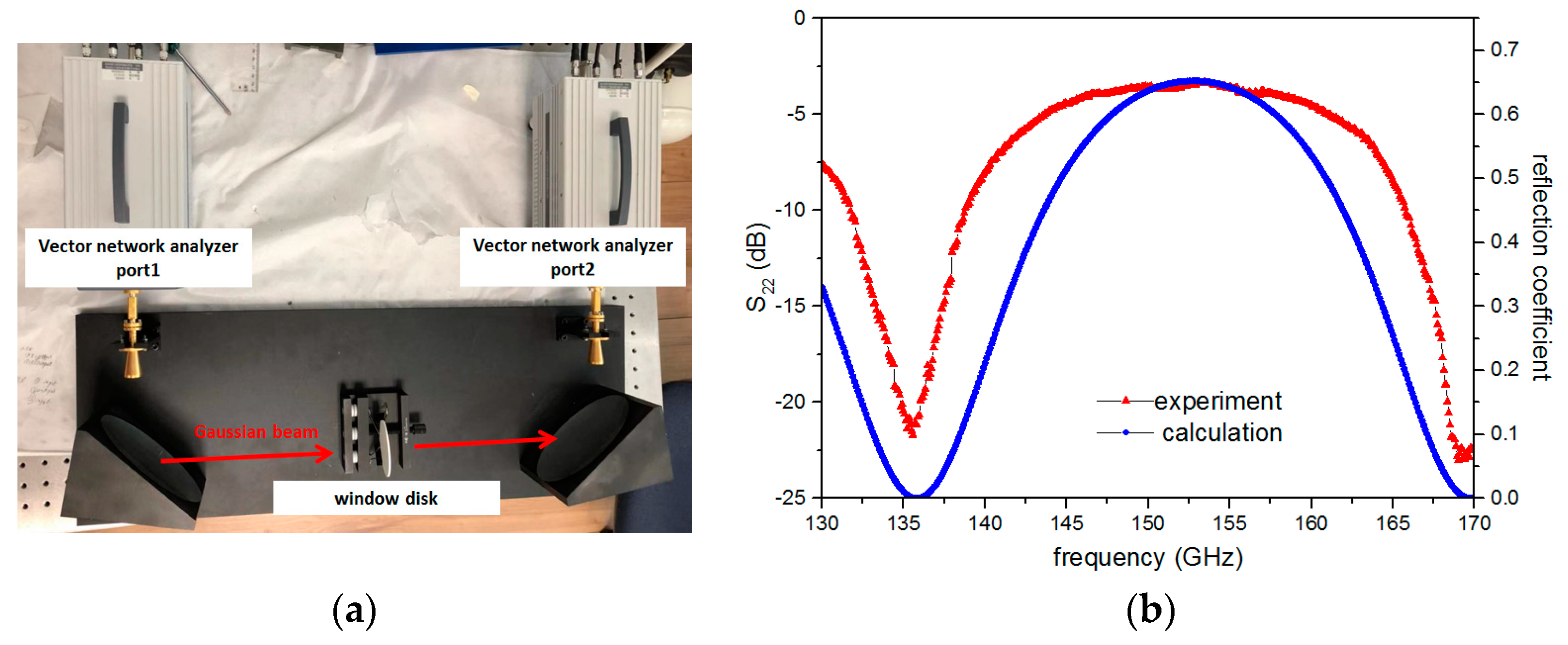
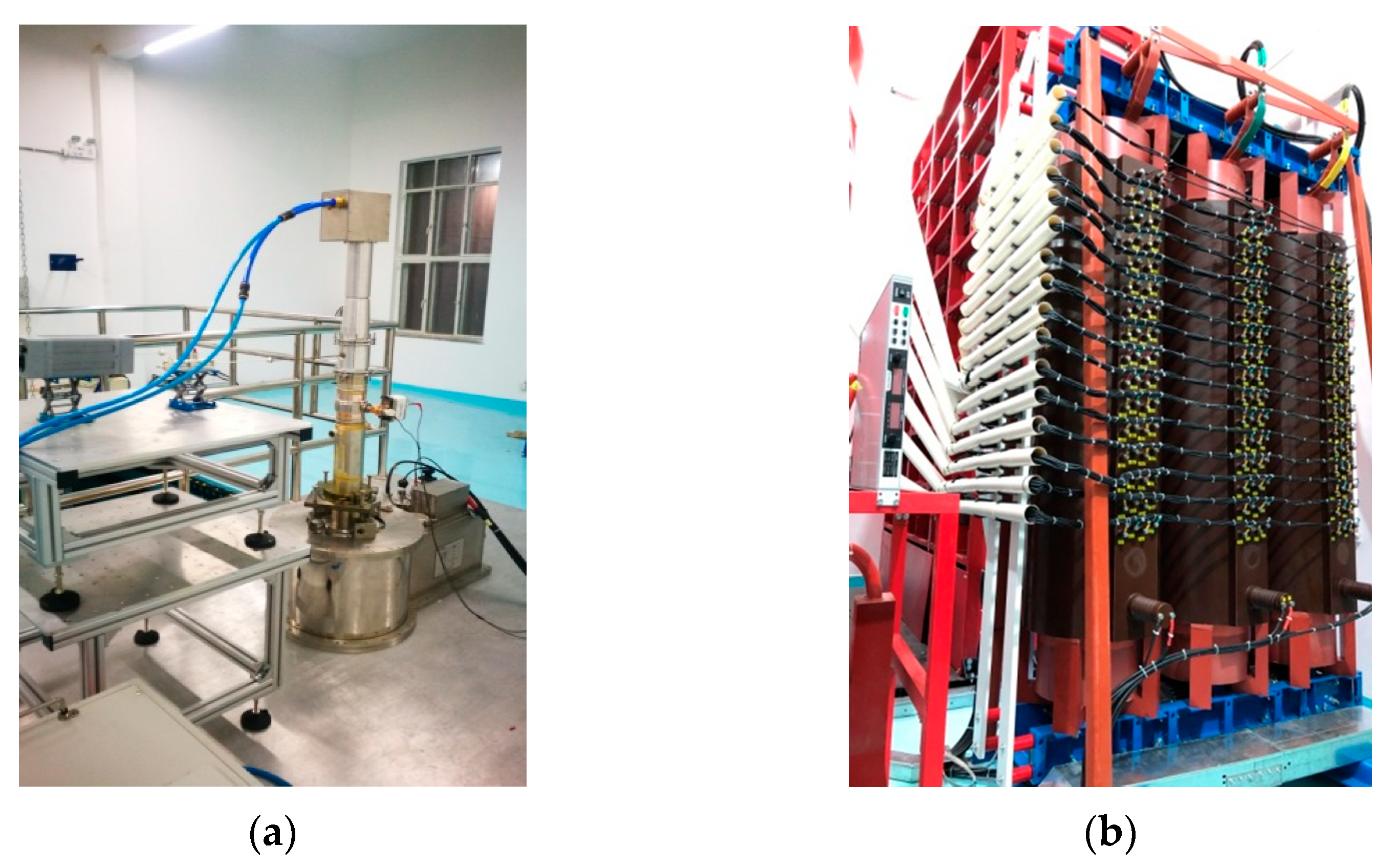

| Operating mode | TE25,10 |
| Frequency | 170 GHz |
| Accelerating voltage | 80 kV |
| Collector depression voltage | 27 kV |
| Beam current | 40 A |
| Cavity magnetic field | 6.72 T |
| Beam radius in the resonator | 7.4 mm |
| Average pitch angle | 1.32 |
| Cavity radius | 17.78 mm |
| RF output power | 1.06 MW |
| Electronic efficiency | 33.1% |
| Window material | Sapphire |
| m | n | ||||
|---|---|---|---|---|---|
| 21 | 11 | 61.5632 | 17.279 | 6.2362 | 2.6064 |
| 22 | 11 | 62.8612 | 17.643 | 6.5269 | 2.6263 |
| 24 | 10 | 62.0492 | 17.415 | 7.1073 | 2.7174 |
| 25 | 10 | 63.3197 | 17.772 | 7.3971 | 2.7374 |
| 27 | 9 | 62.3189 | 17.509 | 7.9760 | 2.8422 |
| 28 | 9 | 63.6259 | 17.858 | 8.2651 | 2.8624 |
| 30 | 8 | 62.5491 | 17.555 | 8.8428 | 2.9856 |
| 31 | 8 | 63.7675 | 17.897 | 9.1313 | 3.0060 |
| Frequency | 169.25 GHz |
| Cavity mode | TE25,10 |
| 15 mm | |
| 17.85 mm | |
| 5° | |
| 3° | |
| Magnetic | 6.72 T |
| Beam radius | 7.4 mm |
| Voltage | 80 kV |
| Current I | 40 A |
| Peak power | 1.06 MW |
| efficiency | 33.1% |
Publisher’s Note: MDPI stays neutral with regard to jurisdictional claims in published maps and institutional affiliations. |
© 2022 by the authors. Licensee MDPI, Basel, Switzerland. This article is an open access article distributed under the terms and conditions of the Creative Commons Attribution (CC BY) license (https://creativecommons.org/licenses/by/4.0/).
Share and Cite
Zhang, Y.; Zeng, X.; Bai, M.; Jin, M.; Hao, W.; Gao, D.; Liu, Q.; Feng, J. The Development of 170 GHz, 1 MW Gyrotron for Fusion Application. Electronics 2022, 11, 1279. https://doi.org/10.3390/electronics11081279
Zhang Y, Zeng X, Bai M, Jin M, Hao W, Gao D, Liu Q, Feng J. The Development of 170 GHz, 1 MW Gyrotron for Fusion Application. Electronics. 2022; 11(8):1279. https://doi.org/10.3390/electronics11081279
Chicago/Turabian StyleZhang, Yichi, Xu Zeng, Ming Bai, Ming Jin, Wenteng Hao, Dongshuo Gao, Qiao Liu, and Jinjun Feng. 2022. "The Development of 170 GHz, 1 MW Gyrotron for Fusion Application" Electronics 11, no. 8: 1279. https://doi.org/10.3390/electronics11081279






